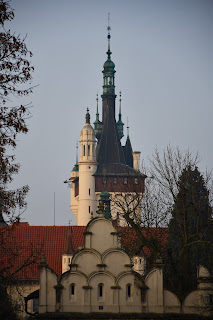Day 2 in Uganda: The only tourists at the Nyero Rock Paintings
We woke up at a leisurely half past seven, as we were told that the Nyero Rock Paintings would not be accessible until after eight o’clock. This may well have been true, but from what I gathered, the staff at our guesthouse simply did not want to wake up early to cook food, as more guests had arrived at midnight. We ate our breakfast in a small room within the main building of the guesthouse, which was still being constructed. It had no windows and consisted of a tightly packed dining table with four chairs and a side table with all the food laid out. The whole concept struck me as the way I would build a hotel if I had never visited a hotel in my life.
We had
arranged that after breakfast, we would be taken to the Nyero Rock Paintings,
and when we began to ask around for our guide, the staff pointed at a schoolboy
who had been patiently waiting for us to get moving. We initially thought this
taciturn lad would be the one to show us the rock paintings as well, but the
site turned out to be more developed than that. It was partly enclosed by a
fence with barbed wire, and once we tipped the schoolboy at the entrance, we
had to walk around a car barrier to get in. There was no one around, but after
some time standing around and reading the signboards, we were noticed by a lady
at what turned out to be the disproportionately large and modern tourist office.
She beckoned us in to pay for the tickets, and after we had done so and signed
the guestbook, we were assigned a guide.
Victoria
and I had assumed that we would simply arrive at the rocks, walk up to the
paintings, and leave, but the guide turned out to be fully necessary. He showed
us the pathway between the three rock painting sites, which led between a
cleft, over rocks, and through thickets. Between the second and third site, we
decided to climb a large smooth rock in the middle to get a view of the
surrounding country. We were impressed to see the bald rocks scattered across
the sparsely inhabited landscape, which was curtained in one direction by dark
blue mountains.
The
paintings themselves were made over three thousand years ago by the original
inhabitants of the area, the Batwa people, who no longer live in the area. Some
Batwa, we were told by our guide, still visit the rocks for religious purposes,
but of course it is unclear whether their interpretations of the symbols are
the same as those of their ancestors many generations ago. Thus, it is only
possible to make educated guesses at what the concentric circles symbolise –
these making up the bulk of the rock art at Nyero. There are also other figures
which resemble canoes, bean pods, and (allegedly) crocodiles and giraffes.
We finished
our tour a full two hours later than we had anticipated, which necessitated a
slight change in plans further down the line. We had wanted to make a
four-hour-long hike along the Sipi Waterfalls in the two-hours-distant
Kapchorwa, but this became unfeasible with a departure time of eleven o’clock,
especially considering we had not yet eaten lunch. We decided to leave the
waterfalls to the following day and made a trip to a local coffee plantation and
lookout point. Fortunately, the estimated travel time was largely accurate, and
the road up the mountain was impressively well-built.
Although it
rained a little right after we had eaten lunch at our new hotel, the rain died
down before we set off again. I would gladly have spent several hours walking
through the village, admiring the women carrying heavy buckets on their heads,
the motorcycles loaded with sheaves of green bananas, and the elders sitting in
front of their homes grinding coffee beans with big pestles. Admittedly, it was
also fun to play at a celebrity, saying hello to children and humouring them as
they queued up to high-five these strange-looking foreigners. Despite my
dislike for coffee, I did enjoy seeing and partaking in the process of roasting
and grinding the beans, all the while listening to the proprietor’s
teleological ravings about the way God intended the world – and especially the
way he intended products to be consumed.


































Comments
Post a Comment